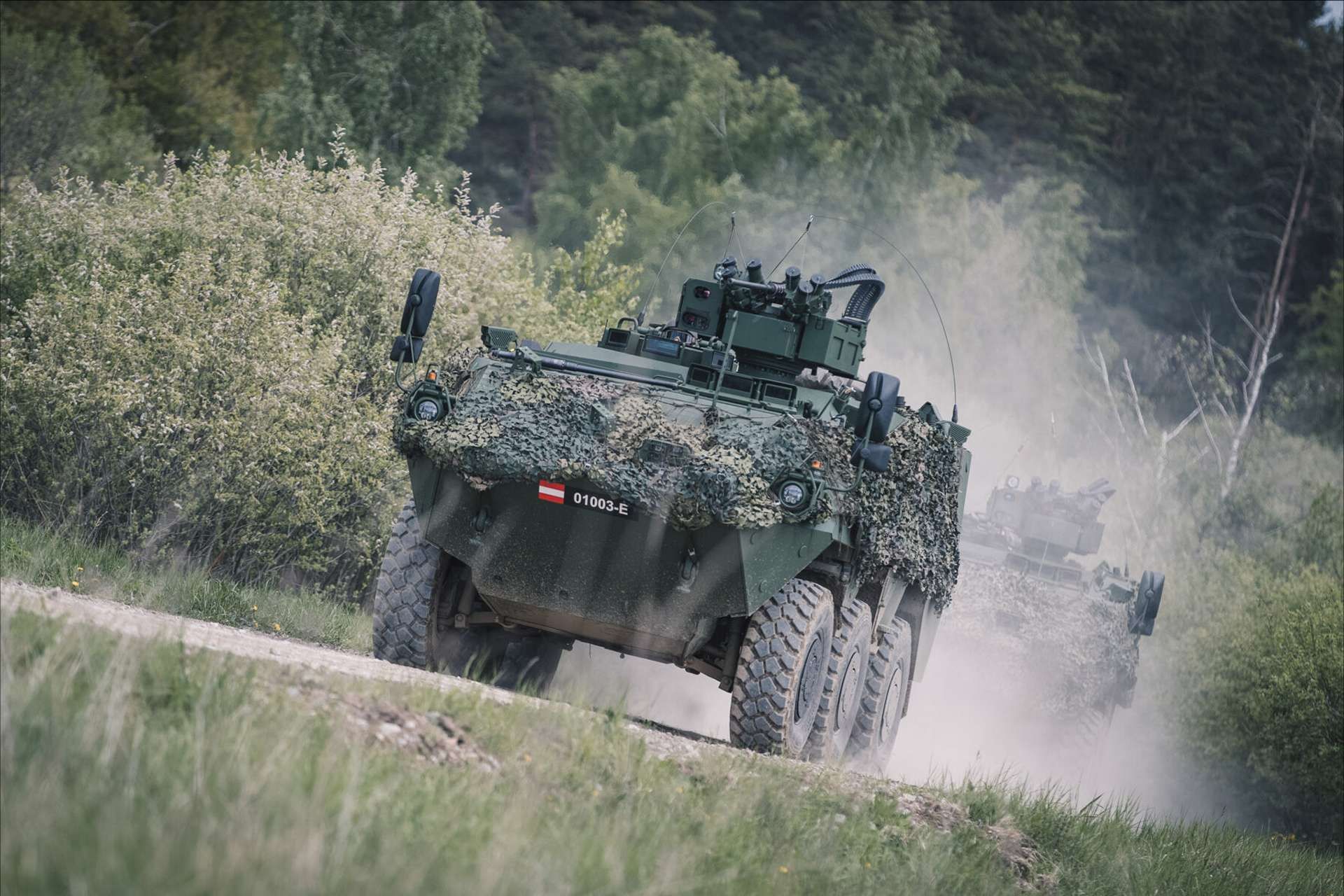Breaking News
GDELS Unveils Another Variant of Pandur Evolution for Special Forces.
According to Hartpunkt, at the 9th KSK Armament Symposium, General Dynamics European Land Systems (GDELS) revealed a new variant of the Pandur Evolution, designed for special forces missions. This marks the first public presentation of this specialized version of the Pandur Evolution, showcasing its advanced capabilities and potential applications.
Follow Army Recognition on Google News at this link

Illustration of the Pandur Evo 6x6, the version presented at KSK is equipped with an automated turret. (Picture source: Austrian MoD)
The vehicle on display is based on a modified 6×6 Pandur Evolution platform. It is equipped with a remotely operated weapon station featuring a 30mm autocannon, an anti-drone protection net, and several canisters for carrying and launching Switchblade 300 Block 20 loitering munitions. Despite the impressive presentation, GDELS representatives refused to provide detailed specifications, only offering limited information regarding the vehicle's weight and mobility.
The presented vehicle is described as a potential mission variant, which has not yet been selected by any customer. GDELS declined to comment on whether this vehicle could serve as a base for the Armored Ground Mobility System (AGMS) Heavy Platform Vehicle.
Although the special forces variant of the Pandur Evolution includes elements such as the weapon station and Switchblade canisters, these components appear to be more demonstrative than definitive equipment. Additionally, the size of the weapon station would hinder the vehicle’s air transportability, suggesting that this configuration will not be included in the final AGMS version.
Three major modifications distinguish the special forces variant of the Pandur from the standard version. The vehicle’s chassis has been significantly shortened at the rear, reducing its empty weight to less than 15 tons without mission equipment. Other visible changes include the presence of a ballistic driver's cabin and a modified engine cooling system. The total authorized weight of the vehicle is 19.5 tons, with a payload capacity of around 3 tons. The powertrain has not been modified, and the vehicle retains a Cummins ISLe 450 diesel engine with 335 kW and a ZF 6-speed automatic transmission.
The base vehicle’s dimensions (2.6 meters wide and 2.2 meters high) allow it to be transported by a C-130 aircraft. The basic armor of the Pandur vehicle family protects the crew from shrapnel, small arms fire, and mines. Although GDELS did not provide details on the armor of the special forces variant, it is likely equipped with additional armor from Rheinmetall Protection Systems and meets the ballistic protection standards of STANAG 4569, likely level 3 or higher.
Since the vehicle was presented in a closed configuration, no information could be obtained about the interior layout or combat space configuration. However, the presence of the ballistic driver's cabin and the modified engine cooling system, also found on previous AGMS versions of the Pandur used by USSOCOM, suggests that this vehicle is well-suited for special operations. The armored engine cooling system protects the engine while allowing the surface to be used for transporting material or mission equipment, and the ballistic driver's cabin allows the driver to maintain situational awareness even under enemy fire.
The AGMS vehicles currently in service, as seen in publicly available images, are equipped with numerous mission-specific modifications, such as remotely operated weapon stations, communication equipment, and sensors. This leads to the conclusion that the special forces version of the Pandur on display is likely only the base platform for future AGMS vehicles, with the final versions expected to include different equipment and armor tailored to specific missions.


























